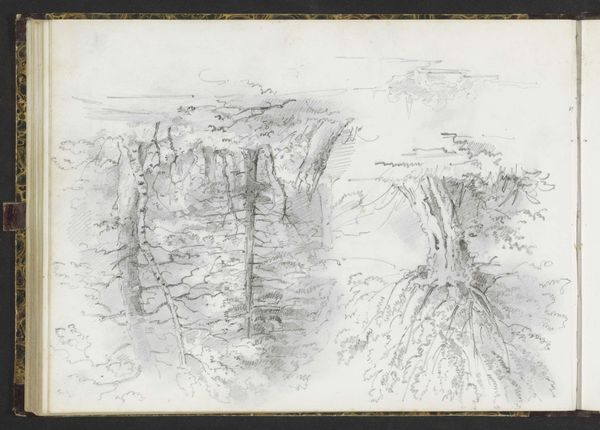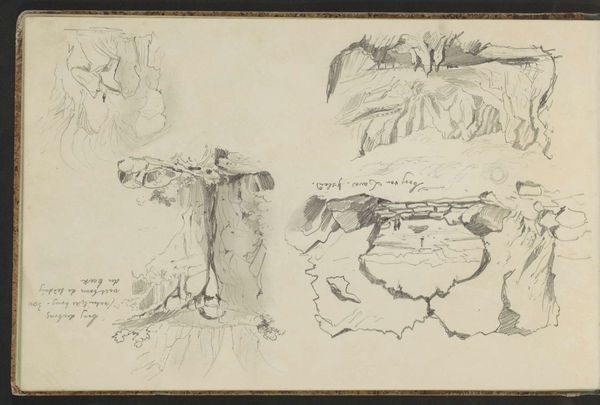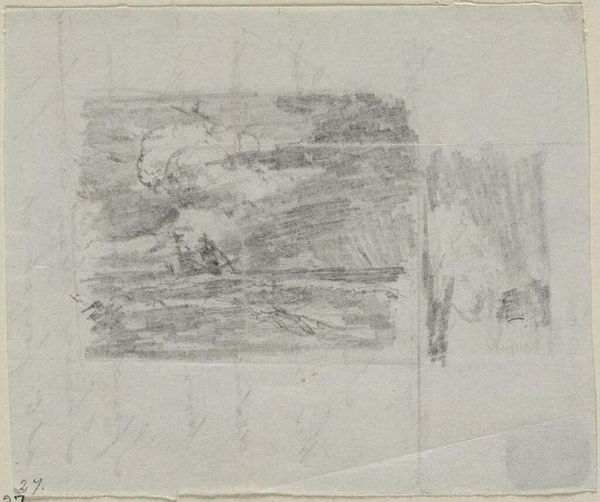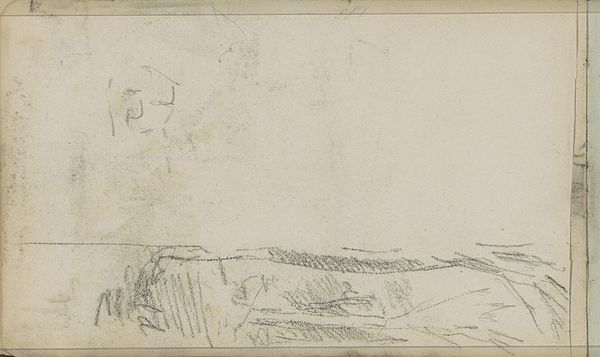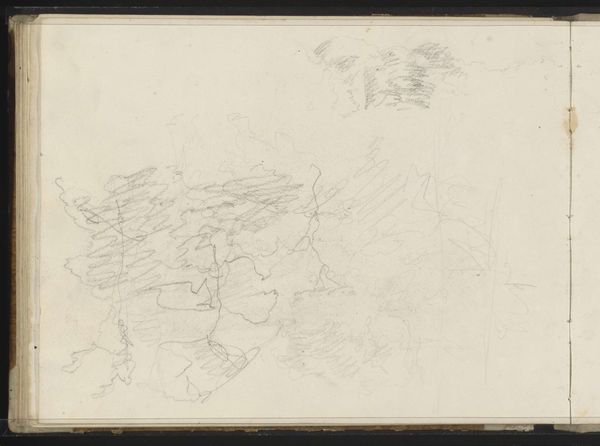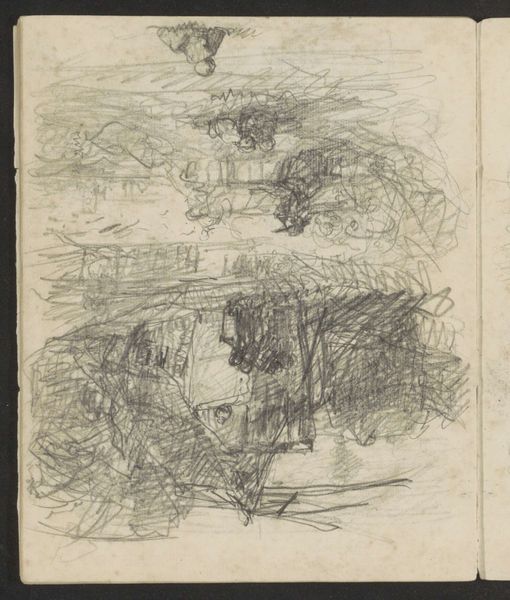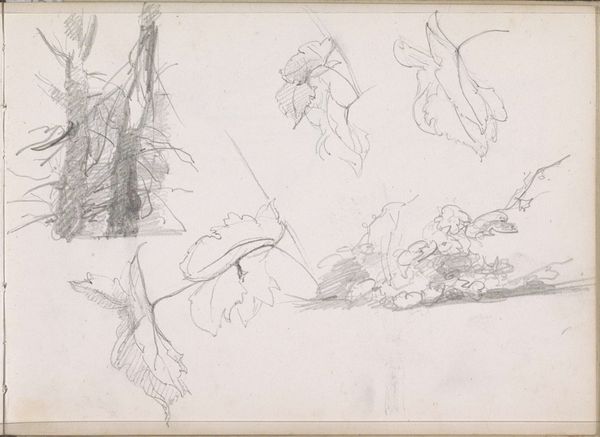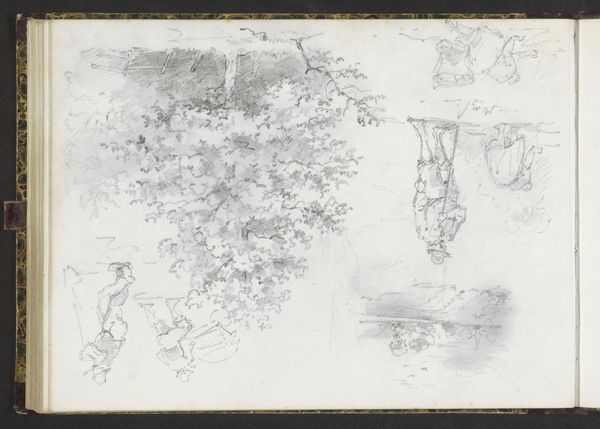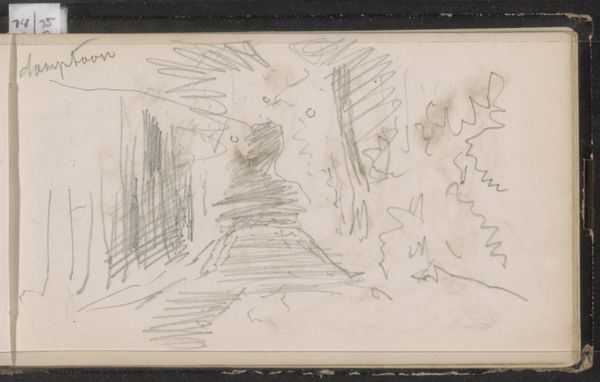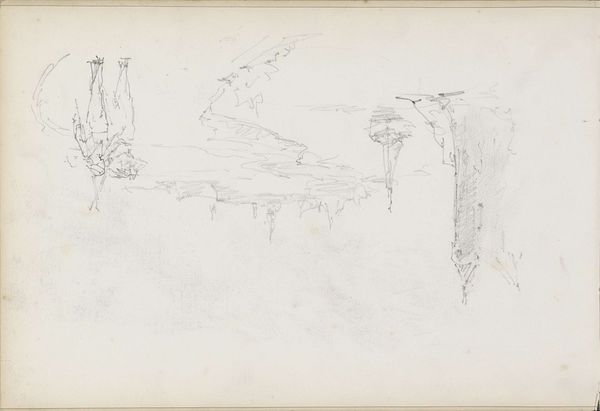
drawing, paper, pencil, graphite
#
drawing
#
landscape
#
paper
#
pencil
#
graphite
#
northern-renaissance
Copyright: Rijks Museum: Open Domain
Curator: We are looking at "Studieblad met bomen, hazen en een man met oogstmand" – a study sheet with trees, hares, and a man with a harvest basket – created by Lambertus Lingeman between 1839 and 1894, using graphite and pencil on paper. Editor: It's fascinating how simple pencil strokes evoke such a strong sense of landscape and pastoral life. What do you find particularly striking about the composition and use of line? Curator: Indeed, the charm lies in its raw structure. Lingeman meticulously built the planes and form using solely line and value. Observe how hatching defines shadow and form. What is most striking is that the work is not concerned with narrative. Do you perceive any emphasis on any narrative or historical significance? Editor: Not necessarily, but the presence of a man gathering harvest and the hares hints at the connection between man and nature, the harmony and perhaps some sort of pre-industrial life and connection with nature? Curator: Perhaps. However, I would suggest that you note how Lingeman uses those forms as structural and geometric compositional devices. Look at how he arranges the picture plane. You see those hares? They don't appear to add symbolic weight to the scene. Do you notice how Lingeman emphasizes spatial relationships rather than any specific allegorical import. Editor: I see what you mean; there isn't necessarily an agenda here, simply, formal relationships are captured using the presented elements, as a study in the intrinsic quality of things, presented and presented again for us. Curator: Precisely! A work like this shows us how to read beyond simple representation and narrative. The materiality, line work and relationship within the visual composition all act as clues. Editor: That makes sense. Thanks for elucidating the structural elements; I see the composition differently now, as a function of geometry, balance and composition rather than subject alone.
Comments
No comments
Be the first to comment and join the conversation on the ultimate creative platform.
